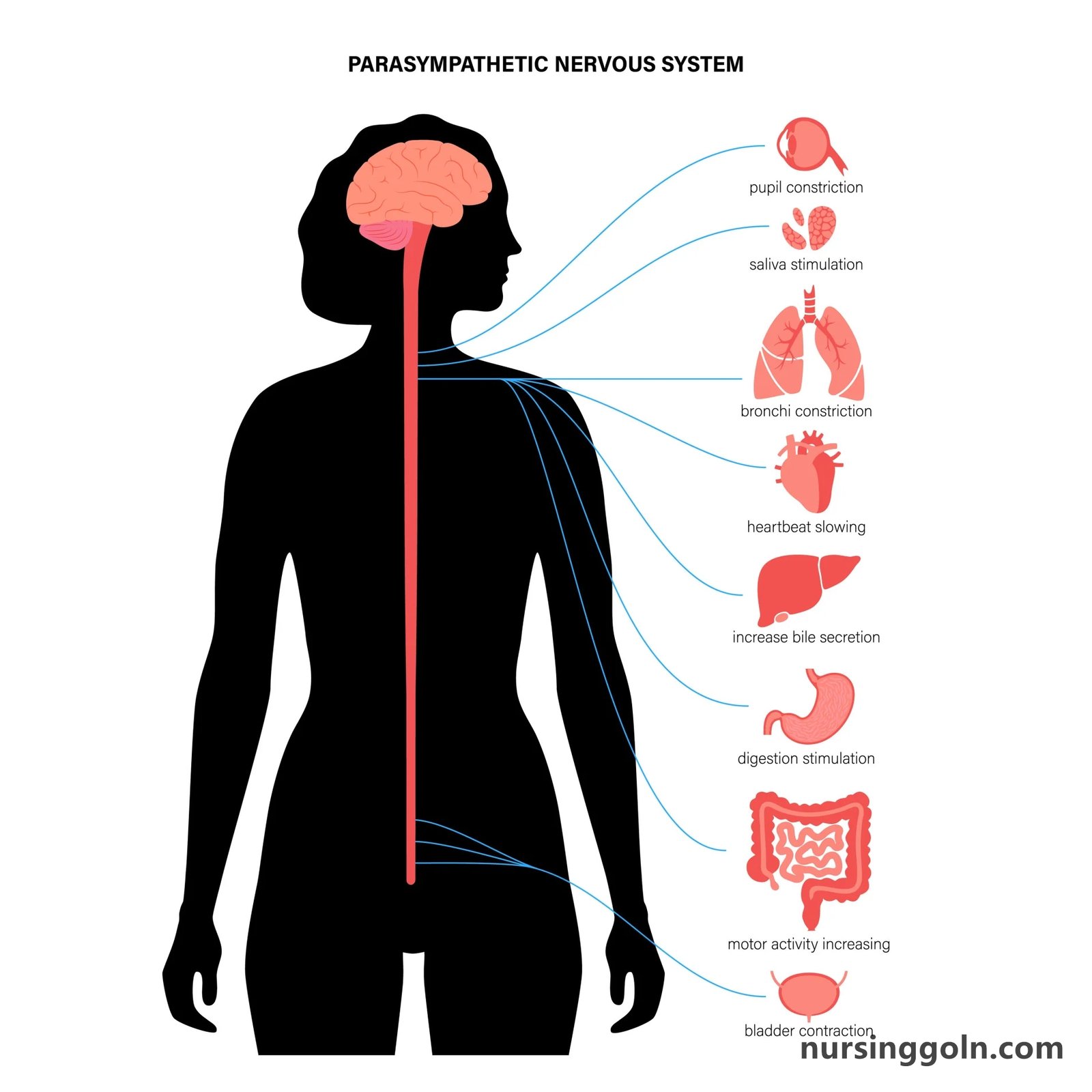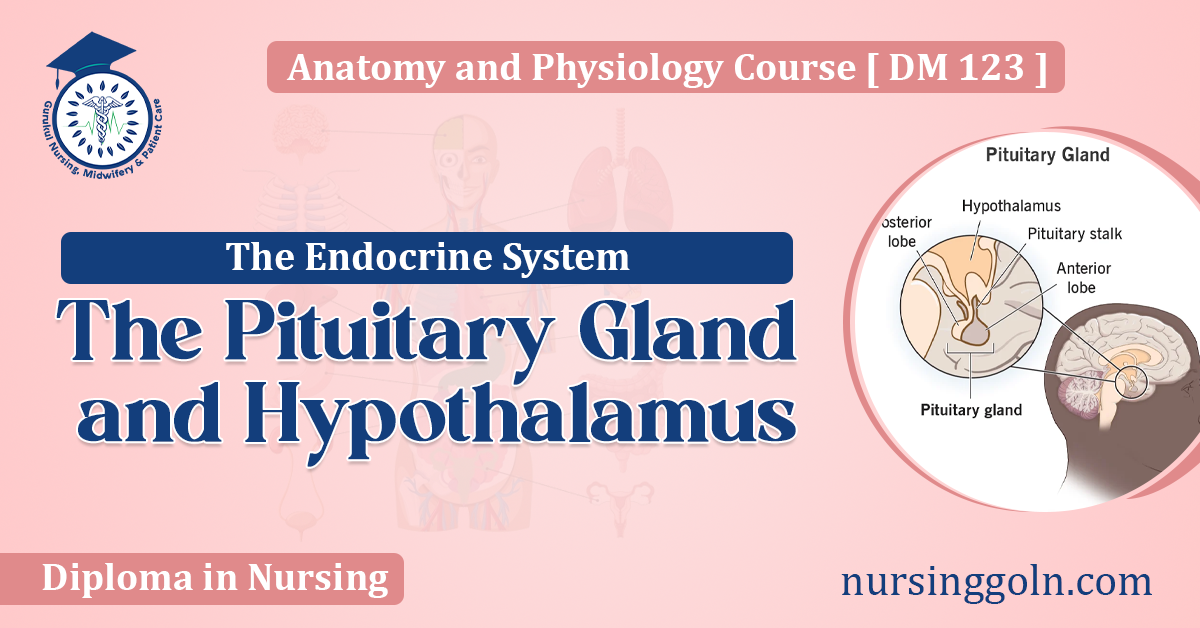Today our topic of discussion is ” The Pituitary Gland and Hypothalamus “. The endocrine system is a masterful network of glands producing hormones that orchestrate numerous body functions, from metabolism to reproduction. At the heart of this system lies the pituitary gland and the hypothalamus. Their collaborative and intricate interactions make them central players in maintaining bodily equilibrium. This article offers a deep dive into the roles, functions, and interconnectedness of the pituitary gland and hypothalamus within the endocrine system.

The Pituitary Gland and Hypothalamus: The Endocrine System
Introduction to the Hypothalamus and Pituitary Gland
The hypothalamus, a small but vital region in the brain, serves as a link between the endocrine and nervous systems. Nestled just beneath it is the pituitary gland, often referred to as the “master gland” due to its wide-reaching hormonal influence over various bodily functions.
Anatomy and Structure
- Hypothalamus: Part of the brain’s diencephalon, it’s roughly the size of an almond. It contains clusters of nerve cells, or nuclei, responsible for specific hormonal functions.
- Pituitary Gland: Roughly pea-sized, it hangs off the hypothalamus, connected by a slender piece of tissue called the infundibulum. The pituitary is divided into two distinct sections: the anterior (front) pituitary or adenohypophysis, and the posterior (back) pituitary or neurohypophysis.
How They Interact: A Hormonal Relay
The hypothalamus perceives and responds to a myriad of internal signals. In turn, it releases specific regulatory hormones that travel to the pituitary, signaling it to either release or inhibit its hormones.
- Hypothalamic Hormones: These include thyrotropin-releasing hormone (TRH), corticotropin-releasing hormone (CRH), and gonadotropin-releasing hormone (GnRH). They regulate the anterior pituitary’s hormone production.
- Pituitary Hormones: In response to hypothalamic signals, the anterior pituitary may release hormones like thyroid-stimulating hormone (TSH), adrenocorticotropic hormone (ACTH), and follicle-stimulating hormone (FSH). The posterior pituitary, however, releases hormones, like oxytocin and vasopressin, produced in the hypothalamus but stored in the pituitary.

Key Functions of the Pituitary Hormones
- Growth Hormone (GH): Stimulates growth, especially during childhood and adolescence. It also has vital metabolic roles in adults.
- Thyroid-Stimulating Hormone (TSH): Stimulates the thyroid gland to produce thyroid hormones, influencing metabolism.
- Adrenocorticotropic Hormone (ACTH): Signals the adrenal glands to produce cortisol, a vital hormone for stress response and metabolism.
- Follicle-stimulating hormone (FSH) and luteinizing Hormone (LH): Central for reproductive functions, these hormones regulate sperm production in men and menstrual cycles in women.
- Prolactin: Primarily responsible for breast milk production post-childbirth.
- Oxytocin: Triggers uterine contractions during childbirth and milk ejection during breastfeeding.
- Vasopressin (or Antidiuretic Hormone, ADH): Maintains fluid balance by reabsorbing water in the kidneys and constricting blood vessels.

Disorders Associated with the Hypothalamus and Pituitary Gland
Disruptions in the intricate balance of the hypothalamic-pituitary axis can lead to disorders.
- Pituitary Adenomas: Benign tumors on the pituitary that can overproduce specific hormones. For instance, prolactinomas result in excessive prolactin production.
- Growth Disorders: Overproduction of GH can lead to gigantism in children and acromegaly in adults. Insufficient GH results in stunted growth.
- Diabetes Insipidus: Caused by ADH deficiencies, leading to excessive thirst and urination.
- Hypopituitarism: Reduced hormone production by the pituitary can affect various body functions, from growth to reproductive capability.
Hormonal Feedback Loops
The endocrine system thrives on feedback loops. For instance, if the thyroid gland releases excess thyroid hormones, the hypothalamus detects this and reduces TRH release, which, in turn, reduces TSH release from the pituitary. This ensures hormonal balance.

Conclusion
The symbiotic relationship between the pituitary gland and the hypothalamus is at the heart of the endocrine system. Their collaborative function ensures that the body’s internal environment remains balanced and responsive to external changes. Understanding their interconnectedness and functions provides insights into the body’s regulatory processes and the importance of hormonal balance for optimal health. As research in endocrinology advances, our comprehension of these central players will only deepen, paving the way for advanced therapeutic interventions and treatments for endocrine disorders.
Read more:
